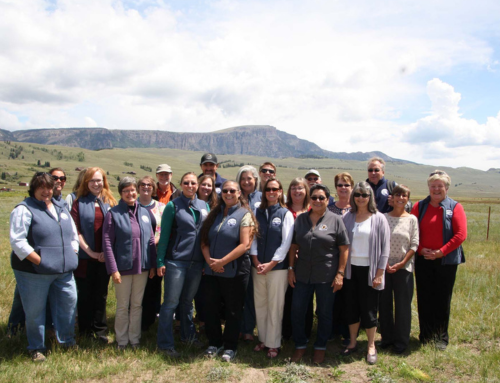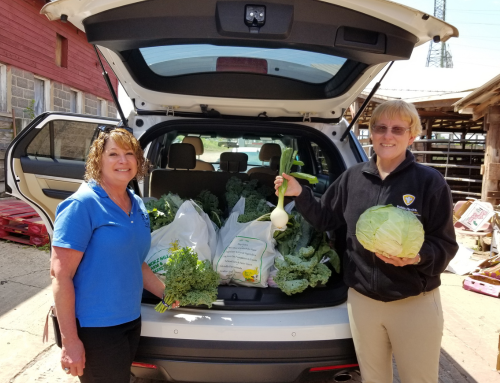The Challenge
Southern Colorado’s San Luis Valley is a geographically isolated, high-desert valley encompassing more than 8,000 square miles. For years, just one state employee was responsible for providing environmental health services to all six counties in the valley (three rural and three frontier). With the passing of the Colorado Public Health Act of 2008 came an even greater increase in expectations and responsibilities on a local level, particularly in the area of environmental health, such as retail food inspection and licensure, pools and recreational water inspections, waste tire certification, and childcare and school inspections. The law brought major reforms to the state governmental public health system by ensuring every person in the state, regardless of where they live, had quality core services available.
The counties and their staff, who had already been struggling to address critical public health issues such as water and food safety on a local level, were now under even more pressure to protect the health of their communities.
Pulling Together to Improve Environmental Health on a Local Level
Knowing that something had to be done to ensure the counties could protect the health of their communities, in 2012 the six counties began to explore ways to work together as a partnership to provide environmental health services at the local level.
They were fortunate to receive critical funding and strategic support from the Colorado Department of Public Health and Environment. And in 2013, they secured a two-year grant from the Center for Sharing Public Health Services to help formalize their partnership, which became known as the San Luis Valley Public Health Partnership. The Center helped bring together all the counties and key players and guided the partnership through the process of implementing a cross-jurisdictional sharing (CJS) staffing arrangement.
The partnership’s formation also was supported by a professional facilitator hired to guide their efforts, as well as stakeholders who were engaged in strategic planning, monthly conference calls and quarterly in-person meetings. Together, they established the group’s structure and operations, and discussed current issues and opportunities throughout the region. An intergovernmental agreement was signed by the chair of each county commission in the region that formally recognized and supported the partnership and the participation of local health officials in its activities. The partnership generated a mission, vision and values statement and guiding principles. In addition, they produced an operating agreement that addressed the partnership’s leadership, decision-making and other operational structures and processes. Eventually, the partnership’s efforts expanded to cover a number of other program areas.
Public Health Concern Reporting Process

- Call received by local public health department.
- Determine the nature of the call.
- Fill out concern report form.
- Refer immediately to public health nurse, epidemiology, or environmental health, if necessary for investigation.
- Investigate and/or provide relevant resources/information.
- Enter information into database.
Results
The six counties found that by sharing staff, expertise, funds and programs they could accomplish more together than they could alone.
With increased staff, capacity and resources, the counties were now able to respond to local environmental needs in a timely manner. And this meant they were better able to protect the health of the communities they serve:
- Counties are now responding to food and sanitation-related complaints and completing inspections faster and at a higher rate. This is thanks to a new, streamlined complaint reporting process, which ensures that public health investigations are implemented in a timely and efficient manner (see schematic on the right).
- Now that there’s a regional program, with its own budget and contract deliverables, counties have received increased funding for environmental health programs, including several grants for radon testing, standardization of inspections to ensure compliance with FDA standards, and tire disposal.
- Counties have been able to increase their outreach around tobacco education, prevention and cessation to community members who are burdened most by tobacco.
Keys to Success
There are several factors that contribute to this partnership’s success:
- Sharing a belief that “we’re in this together.” All staff within the six counties are like-minded regarding their vision for the partnership, all enjoy good interpersonal relationships, and all trust one another.
- Securing support from the state health department and county commissioners. Having this type of support early on helped build a strong foundation for the partnership and helped maintain momentum from the get-go. The health directors are careful about the language they use with these audiences and avoid using terms whose meanings could be misconstrued like “regionalization,” which implies loss of control, and instead use words like “partnership” and “shared programs.”
- Sharing data across counties to enhance collaboration. All partners benefit from having access to shared data. It not only helps enhance collaboration and sustain the partnership, but also helps to improve health equity in the region. For example, by sharing information on the types of environmental health complaints received, the counties are able to develop specific response packets to common complaints such as mold and bedbugs. It also helps them identify common concerns among counties and to develop information sheets to address them — preventing duplication of efforts, and ultimately saving time and work on the part of the local health departments. Ideally, data sharing should be addressed early on, at the onset of when a partnership is formed.



